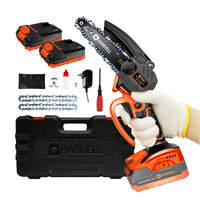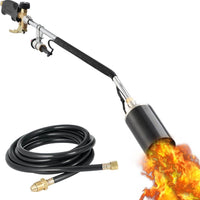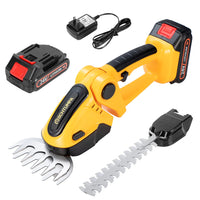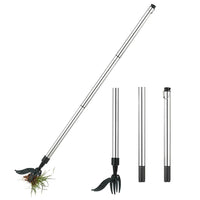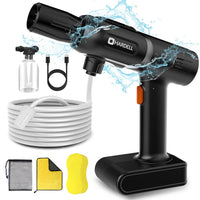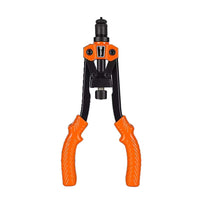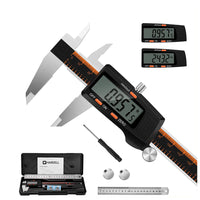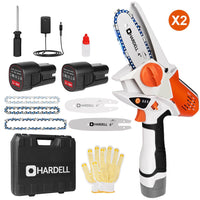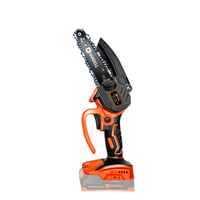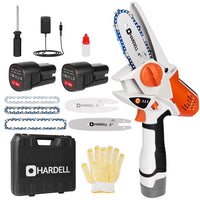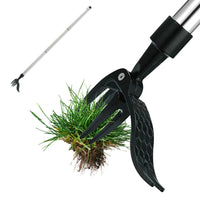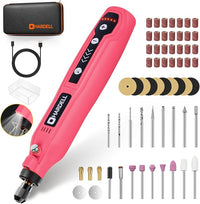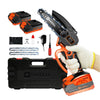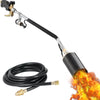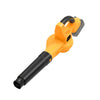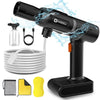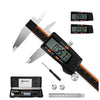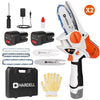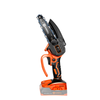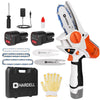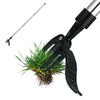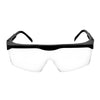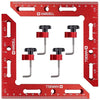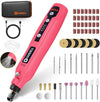Tips And Tricks For Avoiding Failures While Sanding

Sanding is an important part of any woodworking project. It helps to create a smooth and even finish, while also protecting the surface from damage. However, it can be easy to make mistakes when sanding, resulting in poor results or even costly repairs.
To ensure that your sanding projects are successful every time, here are some tips and tricks for avoiding common failures while sanding. With these strategies in mind, you'll be able to achieve the perfect finish for your next project!
Understanding Sanding Techniques
When sanding, it’s important to understand the different techniques and how they work for the best possible results. Sanding can be done with a variety of tools and materials, so understanding which one is right for your project is key.
Flat sanding
Flat sanding is a type of sanding technique in which the surface is sanded using very flat and even motions. Generally, this type of sanding is used to create a smooth finish, as it creates uniformity across the surface. It can also be used to remove unevenness or minor imperfections in wood surfaces.
Contour sanding
Contour sanding is a type of sanding technique used to create curved or rounded edges. This technique can be used to shape the surface wood and to create intricate details such as carvings, grooves, and designs.
It requires a lot of precision and patience, as even the slightest slip can ruin the entire project.
Edge sanding
Edge sanding is a type of sanding technique used to create smooth, clean edges on wood surfaces. This technique is often used for finishing the edges of furniture or small decorative pieces.
It requires a steady hand to ensure that all rough and uneven areas are properly smoothed out. Edge sanding can be done manually using sandpaper, or with a power sander for more precise and consistent results.
How each technique is used in different types of surfaces and projects
Flat sanding is used to make the surface smooth and even. Contour sanding is used to create curved edges or shapes in the wood. Edge sanding is used to make edges on furniture or small pieces smooth.
All of these techniques help make wood surfaces look nice. It is important to use the right technique for each project, to get the best results.
How To Avoid Failures While Sanding
When sanding to avoid failures, it is important to take the right safety precautions.
Test your sanding skills first
When sanding, it is important to test your skills first. Before starting any project, try practicing on a scrap piece of wood to get a better feel for the techniques and tools you will be using.
This will help you understand how each tool works and what kind of results they produce.
Choose the right sandpaper grit for each job
Choosing the right sandpaper grit for each job is essential in avoiding failures while sanding. Different types of sandpaper are available, ranging from coarse to very fine. Coarse-grit sandpaper is best used for removing old paint or rust, while medium-grit sandpaper is best suited for smoothing out rough surfaces.
Keeping the sanding accessory flat and parallel to the surface
When sanding, it is important to keep the sanding accessory flat and parallel to the surface to achieve even results. This means that the sander should be held at a constant angle and should not be slanted or tilted.
The pressure you put on the sander should also be consistent throughout the entire process.
Choose the right RPM for your Hardell rotary tool
The Hardell Rotary Tool is an incredibly versatile tool be used for a variety of applications, from sanding and polishing to drilling and cutting. To ensure the best results, it is important to choose the right RPM (revolutions per minute) for your specific job.
The higher the RPM, the faster and more aggressively the tool will work. if the RPM is too high, it can cause damage to the surface or material being worked on.
Applying even pressure while sanding
Sanding can be a tricky process, and it's easy to make mistakes that can ruin the entire project.
Uneven pressure while sanding can lead to uneven results, leaving you with an unsatisfactory finish. Too much pressure can also cause damage to delicate surfaces or intricate details.
The key is applying even pressure. This means holding the sander at a consistent angle and using the same amount of force throughout the entire process. Additionally, choosing the right RPM for your Hardell Rotary Tool will ensure that you get optimal results without causing any damage to your workpiece.
Avoiding overheating the material
When sanding, it is important to take precautions to avoid overheating the material. This can be done by using a fan or a vacuum to continuously remove dust and other particles from the area while sanding.
Sand in the direction of the grain

Sanding in the direction of the grain is essential for achieving optimum results. This will ensure that the surface remains even and will prevent any bumps or grooves from forming.
It is important to soft sanding motion while sanding in the direction of the grain, as this will help preserve the integrity of delicate surfaces.
Take breaks
Sanding can be a time-consuming and labor-intensive process, so it is important to take breaks to avoid exhaustion. It is best to take a break after every 15 minutes or so to avoid fatigue and ensure that the job is done correctly.
Maintenance Tips
Regularly maintaining your sand is essential for ensuring that they are in good condition and performing optimally.
Following these tips and tricks will help you avoid failures while sanding and ensure that your project turns out exactly how you want it.
Cleaning the sanding accessory after each use
Cleaning the sanding accessory after each use is essential to ensure that the tool remains effective.
It is important to make sure that all dust and debris are removed from the sandpaper or other sanding accessories before they are stored away, as this will help keep them in working order for longer periods. Using compressed air or a damp cloth to wipe down the sanding accessory can help keep them free from dust and debris as well.
Check for surfaces regularly
Check for surface evenness regularly to make sure that you are achieving the desired results. After each sanding session, it is important to check for any flaws or discrepancies to make sure that the surface is even and smooth before applying any finishes or top coats.
Inspecting the sanding accessory for wear and tear
It is important to inspect the sanding accessory regularly for wear and tear. This can be done by checking for any cracks, dents, or other signs of damage that may have occurred over time.
It is essential to make sure that the sandpaper or other accessories are still intact and in good condition to ensure that the results are consistent.
Lubricating the tool regularly
Lubricating the sanding tool regularly is essential to keep it running smoothly. Using a lubricant, such as WD-40, can help reduce friction and heat build-up between the sandpaper and the tool, making it safer and easier to use.
Lubricating the tool can help extend its lifespan and keep it in good working order for longer periods.
Storing the tool and accessories properly
Storing the sanding tool and accessories properly is important to ensure that they remain in good condition for of time. It is best to store the tool and accessories away from direct sunlight, as this can cause the items to warp or become brittle over time.
Safety Tips
- Wearing appropriate safety gear is essential when sanding to protect your eyes, hands, and lungs from any hazardous particles. Safety glasses should be worn at all times to protect the eyes from dust and debris, while a pair of protective gloves can help keep hands safe from cuts and abrasions.
- When sanding, it is important to avoid wearing loose clothing and jewelry. Loose clothing and jewelry can get caught in the sanding tool or become covered in dust, which can be hazardous.
- Using the sanding tool in a well-ventilated area is essential to ensure safety and optimal performance. This can be done by opening windows or turning on fans to help remove dust and debris from the air.
- It is essential to turn off the sanding tool before changing any accessories, such as sandpaper. This will prevent any unexpected accidents or injuries, as well as ensure that the tool is running optimally.
- It is important to keep the sanding tool away from children and pets. This will help prevent any accidents or injuries.
Conclusion

Sanding can be a tricky process, but it doesn't have to be. By following the tips and tricks outlined in this article, you'll be able to ensure that your Hardell rotary tool is running optimally while also staying safe from any potential hazards or accidents.
Cleaning the sandpaper after each use, checking for surface evenness regularly, and lubricating the tool are all important steps for avoiding failures when using a Hardell Rotary Tool.
Proper storage of accessories and wearing appropriate safety gear will help keep everyone involved safe during operations. Taking these precautions seriously will allow you to make sure that every project turns out exactly how you want it with minimal effort!
